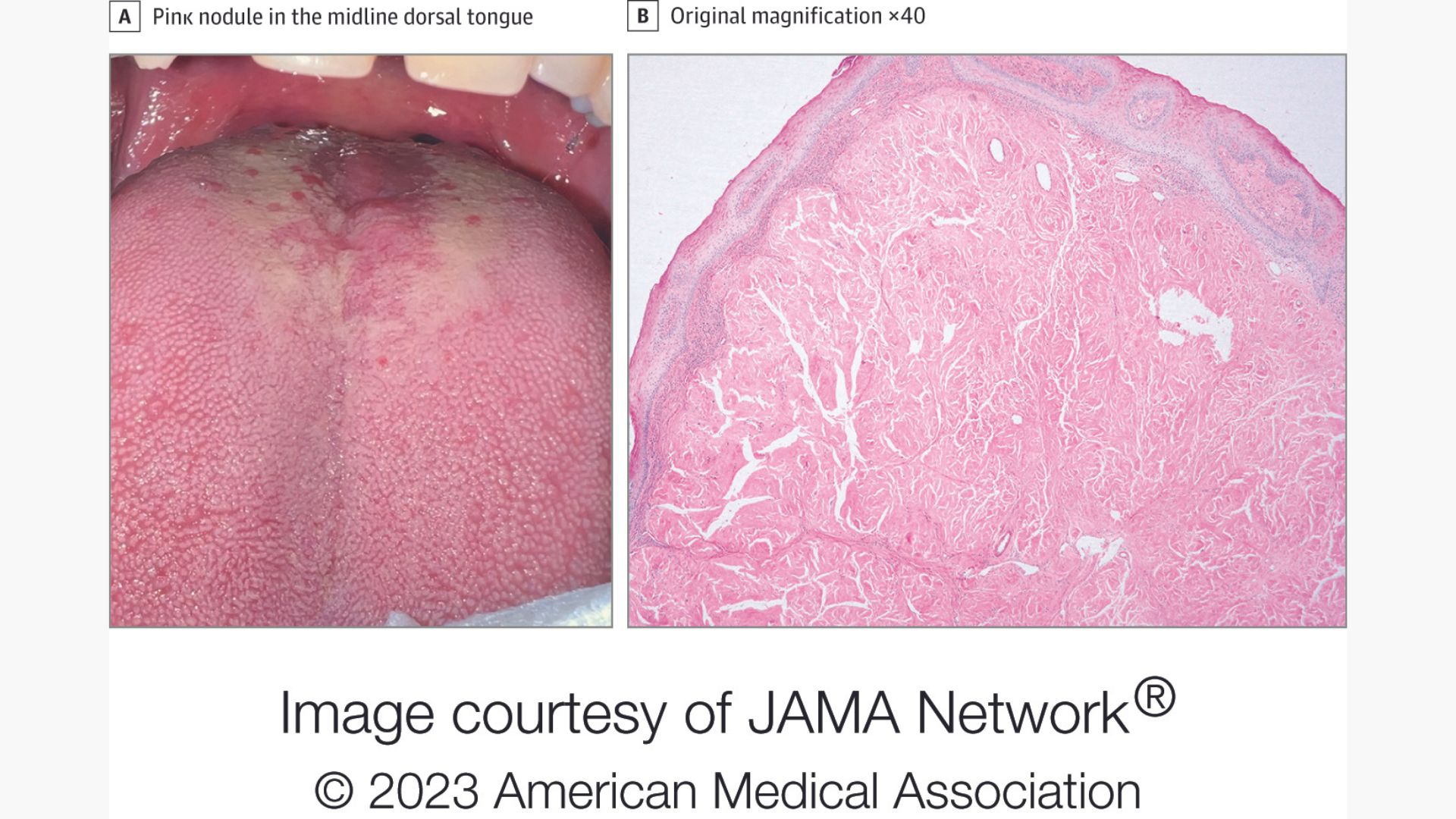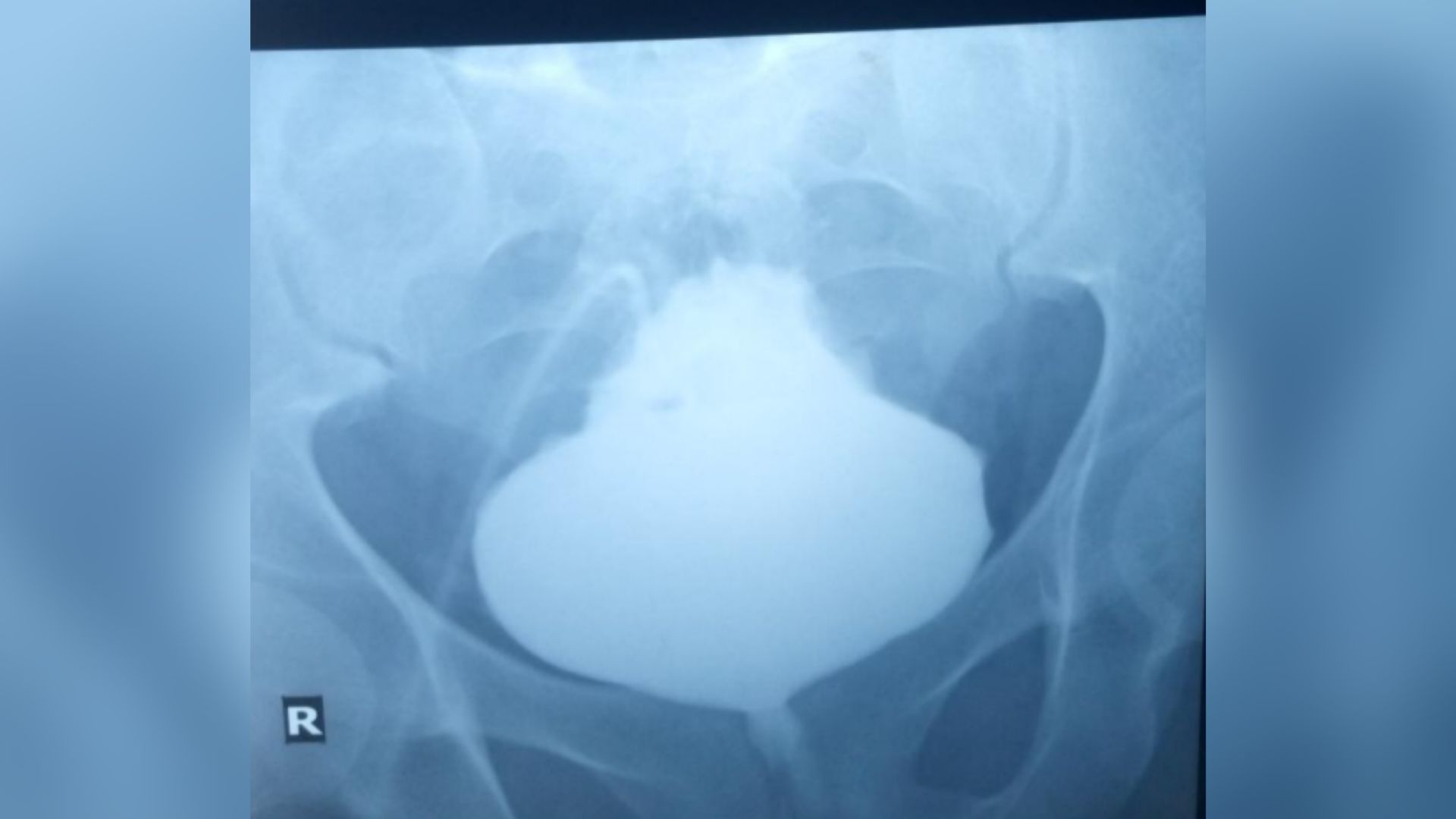Mysterious bump on a man's tongue had an 'extremely rare' cause
A dentist noticed a lump on a patient's tongue, and it turned out to have an unusual cause.

A dentist spotted a lump in the center of a patient's tongue, and doctors later discovered that this mysterious nodule had an "extremely rare" cause.
According to a report published Thursday (June 8) in the journal JAMA Otolaryngology – Head & Neck Surgery, the patient, a 46-year-old man, hadn't noticed the lump on his tongue before his dentist discovered it. The reddish lump was located toward the back of his tongue, near its midline, and appeared "denuded," meaning some of its surface layers were peeling away.
After initially having a sample of the tissue biopsied and examined at one institution, the man went to a different medical center for a second opinion; the results of the first examination were not noted in the case report.
Doctors at the second center found that the lump was firm to the touch, but the patient said that it did not cause him pain. The team obtained the man's biopsied tongue tissue from the previous institution and examined it, finding that the tissue overlying the lump was normal. This examination ruled out the possibility of common tumors of the mouth, such as granular cell tumors, which can be benign or cancerous, and fibromas, which are benign.
Related: Thick, black 'hairs' coated a man's tongue. Here's why.
However, in the lump, doctors found deposits of "amorphous" tissue and immune cells called eosinophils. A test for a fungal infection also came back negative; fungi can sometimes cause median rhomboid glossitis, a condition in which a localized fungal infection causes a raised, red lump on the midline of the tongue.
After another microscopic examination of the biopsy, doctors finally figured out the cause of the bump: a buildup of an abnormal, fibrous protein known as amyloid. Amyloid proteins, often talked about in the context of Alzheimer's disease, are "misfolded," meaning they've lost their typical shape and functionality, and because of that misfolding, they clump together.
Get the world’s most fascinating discoveries delivered straight to your inbox.
The umbrella term for conditions in which these misfolded proteins accumulate and form clumps is "amyloidosis." These conditions can affect different organs — including the heart, kidneys, liver and spleen — and involve different types of amyloid proteins. Amyloidosis can be systemic, meaning the amyloid clumps appear in multiple body tissues, or localized, as was the case for the man with a lump on his tongue.
"Amyloid deposit in the oral cavity, specifically the tongue, is almost always associated with underlying diseases such as primary amyloidosis" — a type of systemic amyloidosis — "multiple myeloma, or rheumatoid arthritis," the report authors noted. However, this patient was in good health, with no underlying systemic diseases.
"Amyloidosis isolated to the tongue without involvement of other organs is extremely rare," the report states.
People with localized amyloidosis in the tongue typically have no symptoms, although, occasionally, they may have trouble speaking due to tongue enlargement. However, patients with the condition should be examined to make sure they don't have systemic amyloidosis, as the disease can be fatal if it interferes with the function of vital organs, the report authors noted.
Because the man did not have systemic amyloidosis and was experiencing little discomfort, he opted not to get the lump removed at the time.
"Still, little is known about the true prognosis of localized amyloidosis due to its rarity, and careful long-term follow-up is strongly advised regardless to monitor for disease progression," the report authors wrote.

Nicoletta Lanese is the health channel editor at Live Science and was previously a news editor and staff writer at the site. She holds a graduate certificate in science communication from UC Santa Cruz and degrees in neuroscience and dance from the University of Florida. Her work has appeared in The Scientist, Science News, the Mercury News, Mongabay and Stanford Medicine Magazine, among other outlets. Based in NYC, she also remains heavily involved in dance and performs in local choreographers' work.


